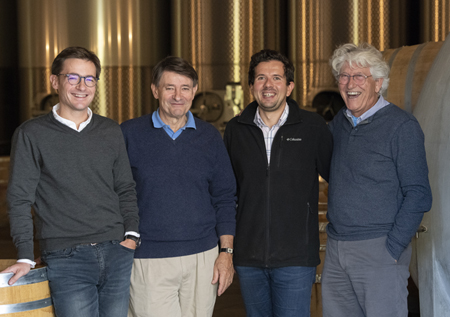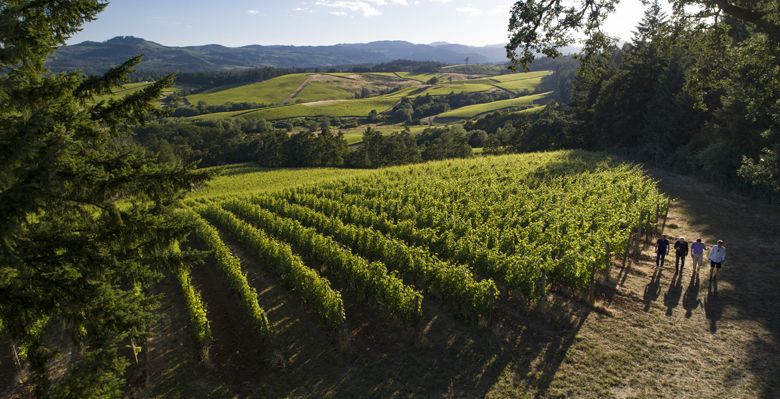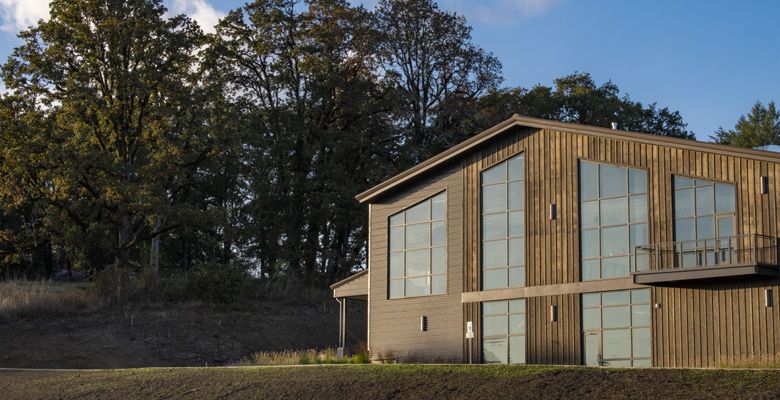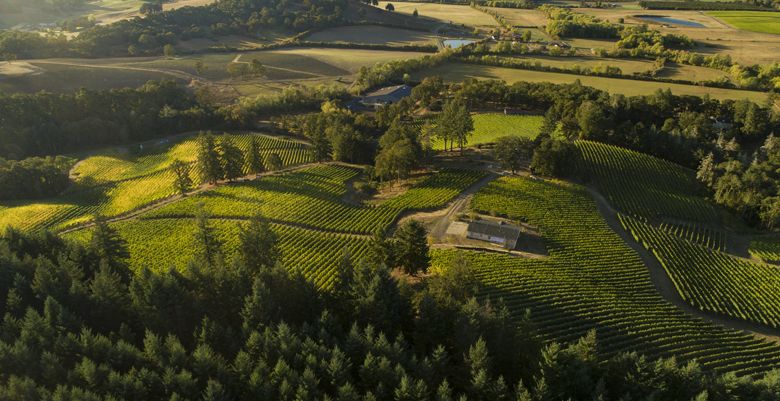Résonance est Arrivé
Jadot’s Oregon brand officially opens to public
In the wine community, Jadot remains a household name. The famed French producer has been crafting vintages from various appellations since the mid-19th century. The winery’s offerings source from historic vineyards based in the Côte d’Or, Beaujolais, Beaune, Côte de Nuits, Chablis and other regions. In short, Jadot has become synonymous with wine.
Like a growing number of celebrated international wine houses, Jadot has shown great interest in Oregon. After years of investigating the New World for an ideal location, Jadot acquired the Résonance Vineyard from growers Kevin and Carla Chambers in 2013; the purchase also included the Yamhill-Carlton vineyard. The French company also bought an established site in the Dundee Hills, now called Découverte Vineyard.
At the end of May, Résonance opened its doors to the custom-built winery — which was used during the 2018 harvest — and a stunning new tasting room set just outside Carlton among the vines of its eponymous estate. The winery draws inspiration from old barns dotting the Willamette Valley countryside. The property faces west toward the Coast Range, the scenic spine of topography tempering the regional climate perfectly for winegrowing.
“It’s very exciting because it’s a little bit new for us,” says Résonance winemaker Guillaume Large. Unlike the Old World operation, the Oregon one focuses on direct-to-consumer sales in the tasting room, which also contains a space for hosting various events. “It’s very close to the most important thing that we have: the vineyard,” he adds.
Large calls the surroundings remarkable, including oak trees well over two centuries old. Vines grow on the hillside and the matching buildings jut up naturally from the soil like little mountain peaks. Three barn-like structures are connected by a walkway, with plenty of natural light and views of the surrounding landscape.

Large moved to Oregon in 2017. Previously, he worked as assistant technical director at Jadot headquarters in Burgundy. He holds an oenologist’s national diploma from the Institut Jules Guyot in Dijon. The Burgundy native started working in wine in his family’s vineyard planted by his great-grandfather.
The Résonance team is rounded out by fellow winemaker Jacques Lardière, who has more than 42 vintages at Jadot to his name. Thibault Gagey is the director of operations and worked a fateful harvest in the Willamette Valley in 2012.
“We’re not here to make Burgundy in Oregon,” Large explains. “We are here to use the knowledge we have gained from making Pinot Noir and Chardonnay.”
Résonance presently uses fruit from three sites in the Valley, including its namesake 20-acre dry-farmed estate first planted in 1981. The soils at this relatively low-lying site are mostly marine basalt. Découverte measures approximately 18 acres and rests a bit higher, around 600 feet in elevation; here, Pinot Noir and a few acres of Chardonnay are rooted to the famous red Jory soils of the Dundee Hills. Résonance also works with Hyland Vineyard in the McMinnville AVA. Cooler sites like this have become all the more popular to the re-emerging cast of Oregon Chardonnay producers. Initially established in 1979, it remains one of the older Willamette Valley vineyards.
The connections between Jadot and Oregon are many — some more obvious than others. Burgundy and the Willamette Valley are nearly identical in latitudes, with similar climates suitable for Pinot Noir and Chardonnay. Maison Louis Jadot launched in 1859, the same year Oregon became a state. And, as Large points out, there’s a keen shared interest in wine purity.
“We are connected not by soil or geology, or weather but by expression of vintage,” he says. He believes the French and Oregon winemaking mindsets are built for this, and it’s made all the better thanks to Pinot’s talkative nature, the welcoming demeanor of the industry and the Valley’s lush gastronomical culture.
Résonance officially opened to the public Memorial Day Weekend, hosting tastings in the winery’s barrel room. As of June 1, the tasting room will host daily tastings, 11 a.m. to 5 p.m.













